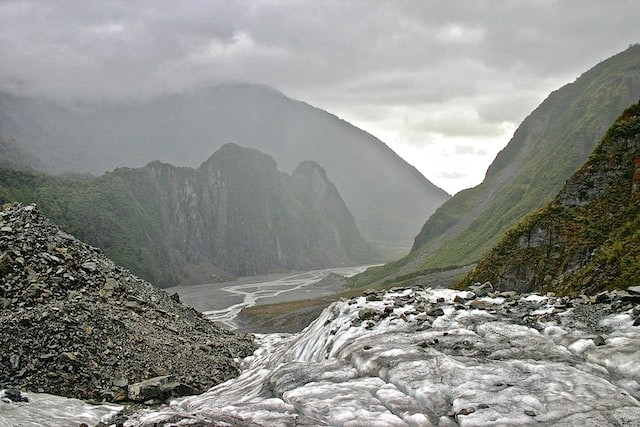Recent information suggests that rather than bats or birds, the next pandemic may well be brought on by ice that is melting.
According to genetic analysis of soil and lake sediments from Lake Hazen, the largest high Arctic freshwater lake in the world, a virus invading a new host for the first time could be more likely to happen close to melting glaciers.
Melting glaciers may result in the next pandemic
 (Photo : James Lee/Unsplash)
(Photo : James Lee/Unsplash)

According to the findings, it is more likely viruses and bacteria dormant in glaciers and permafrost would reawaken and infect nearby wildlife when global temperatures rise due to climate change, especially if their ranges move closer to the poles, as per The Guardian.
To better comprehend the threat posed by frozen viruses, Dr. Stéphane Aris-Brosou and his colleagues at the University of Ottawa in Canada collected soil and sediment samples from Lake Hazen adjacent to were little medium, and large volumes of meltwater from surrounding glaciers poured in.
The probability that these viruses will infect unconnected groups of species was then calculated by scientists using an algorithm.
After that, scientists sequenced the RNA and DNA in all of these samples to discover signatures that closely matched those of well-known viruses as well as possible animal, plant, or fungus hosts.
Other recent studies have claimed that unidentified viruses can and do linger in glacier ice. As an illustration, scientists at Ohio State University in the US reported last year that they had discovered genetic material from 33 viruses, 28 of which were unique, in ice samples obtained from China's Tibetan plateau. The viruses were thought to be about 15,000 years old based on where they were found.
According to predictions, climate change will affect the distribution of current species, possibly bringing old viruses or bacteria into contact with new hosts.
Read More: Next Pandemic? Cases of Pathogens Jumping from Animals to Humans Are on the Rise
Viruses develop more during winter
Many spend a lot of time indoors because the cold isn't our thing for many of us. And because of that, diseases like the common cold, the flu, and COVID-19 particularly its extremely contagious version, Omicron are easier to spread, as per Horizon Health News.
The cold alters how our bodies react to illness and causes us to behave in ways that may raise the risk of infection. The mouth and nose are the typical entry points for viruses although our nasal passages typically have effective defenses against them.
But the cold makes it harder for us to discharge the mucus out of our noses, which makes it simpler for viruses to enter our systems.
Pandemic readiness begins at the national level
Preparedness has numerous components and begins at the national level. In order to support the deployment of vaccinations and other medical countermeasures, it is first and foremost necessary to have robust and resilient health systems, particularly in primary care, as per World Bank Blogs.
Given that pathogens do not respect national boundaries, there are also significant cross-national dimensions to preparedness, with regional and subregional institutions playing a crucial role in areas like regulatory harmonization, standards for reporting and sharing information on disease outbreaks, sharing of important public health assets like high complexity laboratories, and pooled procurement.
There are long-standing vulnerabilities in these preparedness categories in many nations, particularly low- and middle-income countries, which translates into weaknesses at the regional level as well.
The COVID-19 pandemic severely tested even nations with higher levels of preparedness, revealing supply chain failure risks and the impact that a lack of trust, unity, and procedures for intra-government cooperation have played in hampering the response.
Related Article: Thwaites Glacier: Scientists Warn of the Melting of the Doomsday Glacier in Antarctica
© 2024 NatureWorldNews.com All rights reserved. Do not reproduce without permission.

![Tsunami Hazard Zones: New US Map Shows Places at Risk of Flooding and Tsunamis Amid Rising Sea Levels [NOAA]](https://1471793142.rsc.cdn77.org/data/thumbs/full/70325/280/157/50/40/tsunami-hazard-zones-new-us-map-shows-places-at-risk-of-flooding-and-tsunamis-amid-rising-sea-levels-noaa.jpg)



